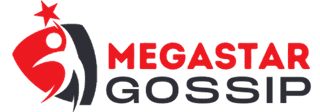
Launching your clothing brand can be an exciting and gratifying venture. There are several processes involved in realizing your idea, from developing your brand and designs to locating production partners and suppliers of materials. However, you can effectively start your clothing line and create a brand that connects with consumers if you have the correct tactics and mindset. Clothes are a thing that embodies comfort, ease, or elegance, and establishing a clothing brand is not an easy task, particularly given the competitive landscape and constantly changing fashion trends in the textile industry. But you can cut through the noise once you discover your voice. This comprehensive guide will walk you through the key steps on how to start a successful clothing brand.
How to Start a Clothing Brand
Identifying Your Style Specialization
Finding your niche is essential before you take the plunge into the world of garment design. The basis of any brand, whether it be streetwear, vintage-inspired designs, or sustainable fashion, is a grasp of your target market and current market trends. Examine current trends in fashion to find voids that your business can address.
Conduct Market Research:
A successful apparel brand is built on a foundation of thorough market research. Examine the latest fashion trends, research your rivals, and pinpoint market gaps that your company can close. Your company plan and design decisions will be influenced by your understanding of the state of your industry.
Draft a Business Strategy:
A solid business plan is necessary to steer the course of your brand. Define your brand’s values, objectives, and mission. Provide a marketing plan, a thorough production and distribution plan, and financial estimates. Your road map to success will be a thorough business plan.
Create a Unique Brand Identity:
Create a brand identity that is distinctive and represents your vision. This includes creating a unique logo, selecting brand colors, and deciding on a unified visual style. What will make you stand out and connect with your target market is your brand identity.
Designing Your Collection
The heart of any clothing brand lies in its designs. Collaborate with skilled designers or develop your design skills to create a cohesive and visually appealing collection. Ensure that your designs align with your brand identity and cater to the preferences of your target market. Strive for a balance between uniqueness and wearability.
Source for Reliable Suppliers
Establishing solid connections with dependable suppliers is essential to your apparel brand’s success. Look into and select manufacturers, trims, and fabric suppliers who share the same values and high standards as your brand.
Building an Online Presence
In the digital age, a strong online presence is essential for the success of any business. Create a visually appealing and user-friendly website to showcase your collection. Leverage social media platforms to engage with your audience, build anticipation for your launch, and create a community around your brand.
Exploit Social Media
Make the most of social media to engage your audience and increase brand recognition. To increase website traffic, develop interesting content, work with influencers, and implement smart marketing strategies.
Establish a Compelling Brand Image:
Make an investment in branding components like an eye-catching logo, attractive packaging, and a unified visual style. Customer loyalty is increased and your apparel brand becomes more recognizable with a strong brand image.
Establish Finance Systems
Put in place effective financial processes to measure sales, manage inventories, and manage money. This includes putting in place payment processing systems, inventory management software, and accounting systems.
Launch and Advertise
When everything is ready, a big launch can happen. Create a marketing plan to increase brand awareness. To draw in your initial clients, think about organizing launch parties, working with influencers, and providing discounts.
Obtain and Examine Data
As your apparel line becomes more popular, gather and examine data regarding consumer behavior, sales results, and return on investment. Make use of these insights to hone your tactics and build your brand over time.
Frequently Asked Questions about How to Start a Clothing Brand
1. How can I identify my fashion niche?
Researching your target market and conducting introspection are two steps in identifying your fashion specialty. Determine your passion, personal style, and market gaps. Examine the newest trends, comprehend your target market, and look for undiscovered fashion sector niches.
2. What components need to be taken into account while creating my brand identity?
Your mission, beliefs, aesthetics, and other aspects are all part of your brand identity. Think about using typeface, color schemes, and imagery that complement the personality of your brand. Make sure your clothing line stands out from the competition and that your brand identity appeals to your target market.
3. How can I handle returns and customer inquiries effectively?
Implement a clear and customer-friendly return policy. Provide accessible customer support channels, such as email or live chat, and respond promptly to inquiries. Address customer concerns with empathy and professionalism, aiming to turn potential issues into positive experiences.
4. What advice do you have for aspiring entrepreneurs entering the fashion industry?
stay true to your unique vision and brand identity. Continuously educate yourself about the industry trends and evolving consumer preferences. Build a supportive network, seek mentorship, and be adaptable to changes. Embrace challenges as learning opportunities and stay passionate about your journey.
5. How can I make sure the manufacturers and materials used to make my clothes are of a high caliber?
Build connections with reliable vendors of high-quality textiles. Investigate prospective manufacturers in-depth, taking into account things like their production methods, moral standards, and prior customer feedback. Before committing to a cooperation, request samples to assess the quality of the materials.
6. What are the essential measures for creating a powerful internet presence?
Developing a visually beautiful and user-friendly website is a necessary step in establishing an online presence. Use social media to interact with your audience, post behind-the-scenes material, and create a sense of community. Add e-commerce functionality to your website and use digital marketing techniques to increase visitors.
7. How do I manage an efficient supply chain for my clothing brand?
Effective supply chain management involves clear communication with suppliers and manufacturers. Implement robust inventory management systems to track stock levels and avoid overstock or shortages. Regularly evaluate and optimize your supply chain to ensure timely delivery and quality control.
8. Which marketing techniques should I employ to advertise my apparel line?
Employ a variety of digital marketing techniques, such as influencer partnerships, email campaigns, content marketing, and social media marketing. Make content that reflects your brand identity and is both interesting and shareable. Arrange a campaign or launch event to raise interest and visibility.
Wrap-Up
Starting your clothing line is an endeavor that requires imagination, tenacity, and careful preparation. Always keep in mind that every choice you make matters as you construct the identity of your brand. Adhere to your vision, establish a genuine connection with your audience, and accept obstacles as learning opportunities. Even though the path is complicated, every step adds to the overall picture of your achievement.

Leave a Reply